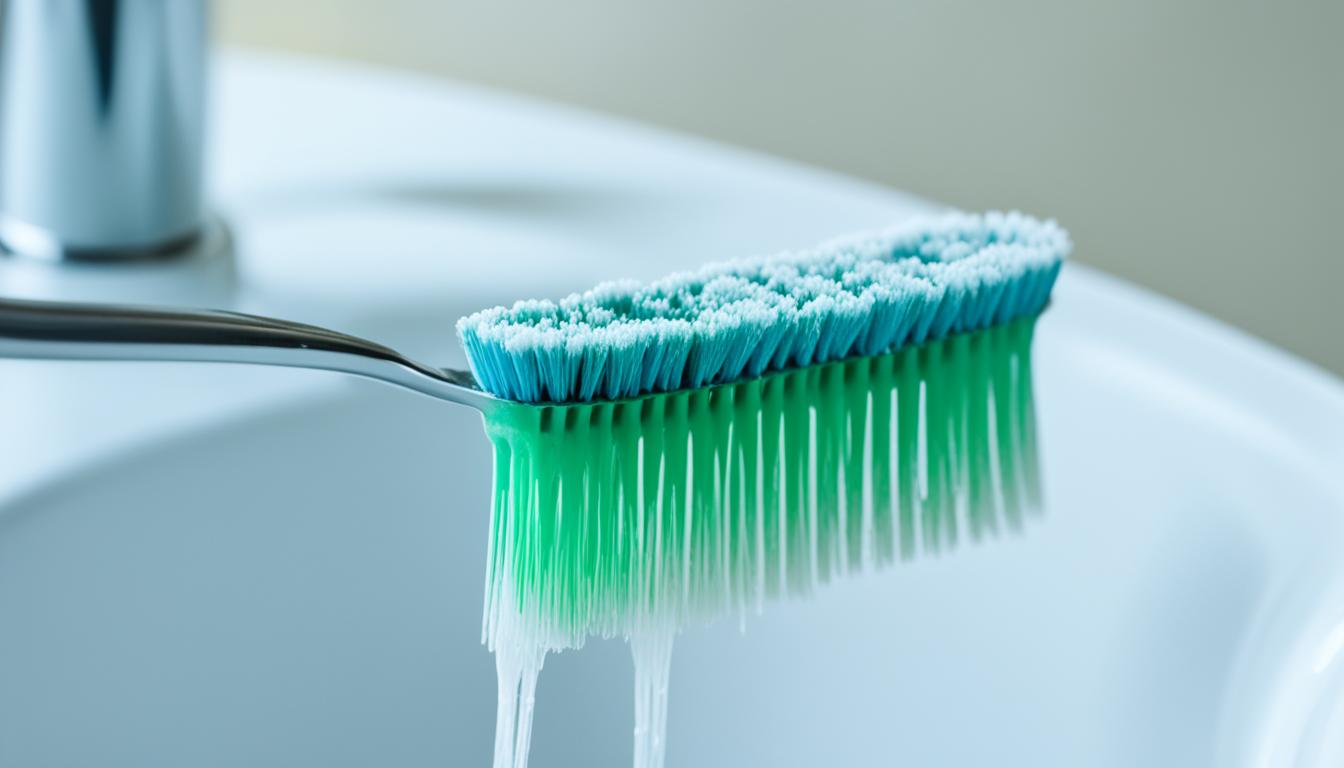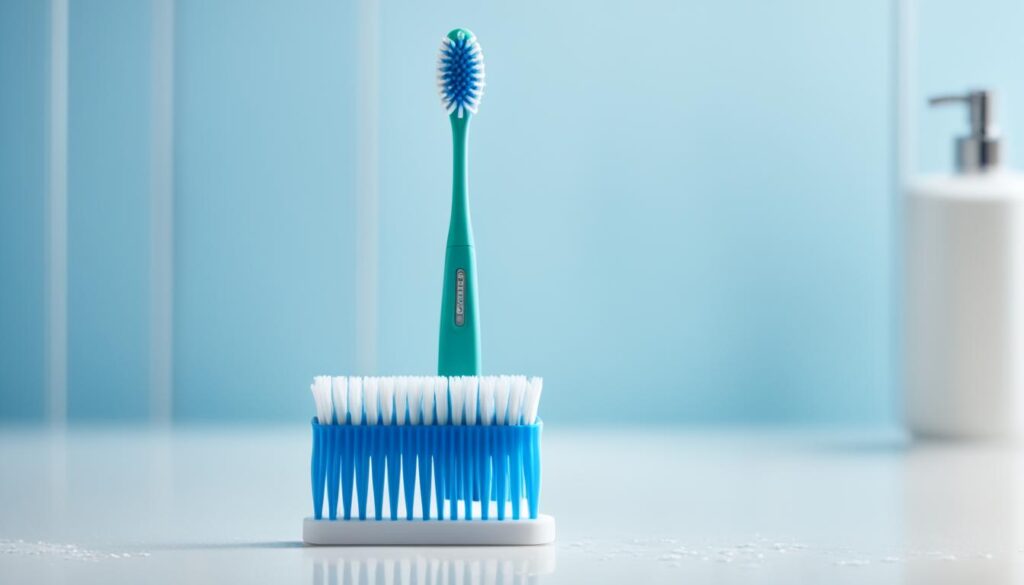
Remove Toothbrush Mold Safely & Effectively
Welcome to our guide on how to remove toothbrush mold safely and effectively. It’s important to maintain proper oral hygiene, and that includes keeping your toothbrush clean and free from mold. In this section, we will explore expert techniques that will help you eliminate toothbrush mold and ensure a hygienic brushing experience.
Key Takeaways
- Regularly inspect your toothbrush for any signs of mold growth.
- Consider replacing your toothbrush every 3-4 months to prevent mold buildup.
- Use vinegar, hydrogen peroxide, or a toothbrush sanitizer to clean your toothbrush.
- Avoid storing your toothbrush in a closed container or travel case to allow for proper air circulation.
- Remember to rinse your toothbrush thoroughly after each use and let it air dry.
Preventing Toothbrush Mold and Ensuring Hygiene
Proper toothbrush hygiene is essential for maintaining oral health and preventing the growth of mold. Follow these tips to keep your toothbrush clean and free from mold:
- Store your toothbrush in an upright position to allow it to air dry completely after each use. This helps prevent moisture buildup, which can lead to mold growth.
- After brushing, rinse your toothbrush thoroughly with hot water to remove any toothpaste or food particles. This also helps to eliminate bacteria that may be present.
- Replace your toothbrush every three to four months, or sooner if the bristles become frayed. An old or worn toothbrush is more prone to mold growth.
- Toothbrush holders can harbor bacteria and mold if not cleaned regularly. Clean your toothbrush holder at least once a week by washing it with hot, soapy water and allowing it to air dry completely.
- Consider using a toothbrush sanitizer or UV sanitizer to further eliminate bacteria and mold from your toothbrush. These devices use germicidal UV light to kill bacteria and fungi.
- Avoid sharing toothbrushes with others to prevent the transfer of bacteria and mold.
By following these best practices for toothbrush storage, cleaning your toothbrush holder, and maintaining proper toothbrush hygiene, you can significantly reduce the risk of toothbrush mold and ensure optimal oral hygiene.
Keep your toothbrush mold-free and your smile healthy!
Related Articles:
- The Importance of Regular Toothbrush Replacement
- What to Do If You Find Mold on Your Toothbrush
Image:

Conclusion
In conclusion, implementing the techniques and tips outlined in this article will enable you to safely and effectively remove toothbrush mold. By prioritizing proper hygiene practices and ensuring a clean toothbrush, you can maintain optimal oral health. A mold-free toothbrush not only safeguards your well-being but also promotes overall dental hygiene.
If you require professional assistance with mold assessments, prevention, or remediation in the Miami area, look no further than Fix Mold Miami. Our team of experts is equipped to handle any mold-related challenges you may encounter, providing thorough assessments and effective solutions. To schedule a consultation or learn more about our services, please contact Fix Mold Miami at 305-465-6653.
Remember, with the right knowledge and proactive measures, you can keep toothbrush mold at bay and ensure a healthier smile for years to come.




